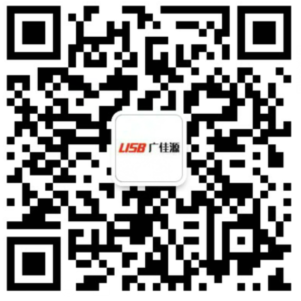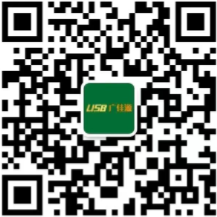 Mr. Chen:136-6225-2835
Mr. Chen:136-6225-2835
 Miss Chen:189-2385-0895
Miss Chen:189-2385-0895
Shenzhen Guangjiayuan Electronic Technology Co., Ltd
Mr. Chen: 136-6225-2835 (same WeChat account)
QQ: 979285705
Miss Chen: 189-2385-0895 (same WeChat account)
QQ: 2391552662
Chen Weiting :135-3824-4786 (same WeChat account)
Chen Weihao: 139-2459-4393 (same WeChat account)
Tel: 86-0755-33182327
Email: gjydz88@163.com
Website: www.usb-type.com
Address: Building 10, Hongxing Gebu Qixiang, Songgang Town, Bao'an District, Shenzhen, Guangdong Province
When it comes to USB, everyone is definitely familiar with it. It may be the most commonly used interface in our current lives, and there is no one. There is a USB interface on the mobile phone (especially Android), on the Portable storage device, on the printer, and on the camera; It can even be said that the USB interface can be seen on almost all the devices that need charging and data transmission at present. But some netizens may ask, my phone doesn't have a USB interface, it's an elliptical interface. How can I install a USB interface on a phone that big? This is what I want to share with you today. Through this article, you can understand everything.

Firstly, we need to be clear that the full name of USB is Universal Serial Bus, also known as Universal Serial Bus. It is a serial bus standard that connects internal systems and external devices of a computer, and also a technical specification. USB was developed by the USB Standardization Organization (USB-IF) initiated by Intel and Microsoft, which is also the initiator of the USB standard's mess in recent years. Now, the official science popularization begins.
1、 USB interface type
Firstly, let's start with the interface type, which, as the name suggests, refers to the category and form of the interface. It can be roughly divided into three types: type-a, type-b, and type-c. Below these three types, type-a and type-b can be further divided into standard version type-a, mini a, micro a, standard version type-b, mini B, and micro b, while type-c always has only one type specification.

From the above figure, we can see that type-a is the most common interface for connecting a USB drive or keyboard and mouse on our computer, and it is also the interface that people joke about having to plug in three times to get it right. Mini-A and Micro-A interfaces are very rare, and perhaps a device that uses these two interfaces may not be seen for a long time. Type-b is commonly used in devices such as printers, scanners, and composite machines, but its advantage is that the interface volume is large and not easily affected by external forces to break. The Mini-B interface is commonly seen in old-fashioned MP3 and mobile card speakers, but has been largely discontinued in recent years. The Micro-B interface, on the other hand, was used for a long time in previous Android phones and even became a standard interface. Now, it can still be seen in some lower end devices.

Later on, with the gradual popularization of USB 3.0, these commonly used interfaces also underwent some changes. In the 1.0 2.0 era, only a 4-wire interface could meet people's transmission needs. However, in the face of increasingly fast transmission needs, the USB standardization organization has launched the USB 3.0 interface standard. Due to the addition of five new lines in USB 3.0, some changes have been made in the interface. The external size of type-a has not changed, but type-b and micro b have suddenly added one more piece, but all three can Backward compatibility with the interface of USB 2.0. In terms of applications, these USB 3.0 interfaces gradually replace the old ones, especially the micro b interface, which is still carried in most Portable storage device.

However, later on, as mobile phones became thinner and combined with the easily damaged micro b interface, and Apple made the Lighting interface at that time, it had to outdo other interfaces in terms of ease of use and durability. So, the type-c interface emerged, with both positive and negative pluggable features, fast transmission speed, faster charging speed, and more durability. It can be said that it truly revolutionized and later became the most mainstream interface at present. However, the type-c interface also requires protocol support to release all its energy, and the protocol is the second part that will be discussed next.
2、 Various protocols
Firstly, let's talk about the most "easy to understand" USB protocol, which is also a protocol standard developed by the USB standardization organization itself. The earliest USB protocol standards were USB 1.0 and USB 1.1, and later came 2.0 and 3.0; At this point, the situation is still quite normal, and the speed of these agreements can be said to be increasing exponentially. Then USB 3.1 appeared, and at this point we still feel normal, as the interface type has not undergone significant changes.

However, the USB standardization organization subsequently updated a very speechless naming convention, with the new protocol naming after 3.0 and 3.1 being either USB 3.2 or USB 4.0. These are normal naming updates, but the USB standardization organization does not emphasize martial arts. It not only changed the naming convention, but also changed the naming convention for USB 3.0 and 3.1. Currently, the previous USB 3.0 is now USB 3.2 Gen1, and the previous USB 3.1 is USB 3.2 Gen2, which is not much. Logically speaking, the next generation USB protocol should be called USB 3.2 Gen3, which is considered normal. However, the USB standardization organization has named it USB 3.2 Gen2x2. I really cannot understand the brain hole of USB standardization organization.

And the latest protocol is USB 4, which is finally starting to work normally. In terms of interface speed, as can be seen from the above figure, it can be said that each generation has undergone significant upgrades in transmission speed. From the earliest USB 1.0 with only 1.5Mbps to 1.1 with 12Mbps, then to USB 2.0 with 480Mbps, 3.0 with 5Gbps, and up to 10Gbps, 20Gbps, and 40Gbps. It can be said that technology is developing rapidly, and people's demand for data transmission speed is also increasing. It is worth mentioning that the USB 4 protocol only supports interface types of type c.

Next are some protocols that can be said to be exclusive to the type-c interface. We often hear about the fully functional type-c interface that a certain laptop is equipped with. Generally speaking, the protocols supported by this interface are relatively complete. As shown in the above figure, the PD fast charging protocol can enable this interface to support up to 100W of power supply; The QC4+fast charging protocol is basically prepared for mobile phones; The DP display protocol supports direct output of video signals to the monitor from the type-c interface; Thunderbolt uses the PCIe channel and supports connection to the Docking station of the graphics card; The USB protocol is the most basic.

Let me mention the Thunderbolt protocol again. This protocol was jointly developed by Intel and Apple, and supports a maximum transmission bandwidth of 40Gbps. It can connect two 4K 60Hz displays simultaneously. If it is used with Thunderbolt Docking station, only one interface can be used to power the device, connect the network cable, connect the keyboard and mouse headset and other peripheral products at the same time. It can be said that it is truly versatile.
After so many years of development, the type-C interface has actually become very mature, and we have a vision of the type-C interface going global. However, at present, it is basically impossible to achieve complete success unless major manufacturers unite and develop together. However, how many years of development is needed to achieve this.
Contact person:
Mr. Chen 136-6225-2835 (same WeChat account)
Miss Chen 189-2385-0895 (same WeChat account)
Chen Weiting 135-3824-4786 (same WeChat account)
Chen Weihao 139-2459-4393 (same WeChat account)
Address:
Building 10, Hongxing Gebu Qixiang, Songgang Town, Bao'an District, Shenzhen, Guangdong Province
 |
 |
| Technology 1 | Technology 2 |